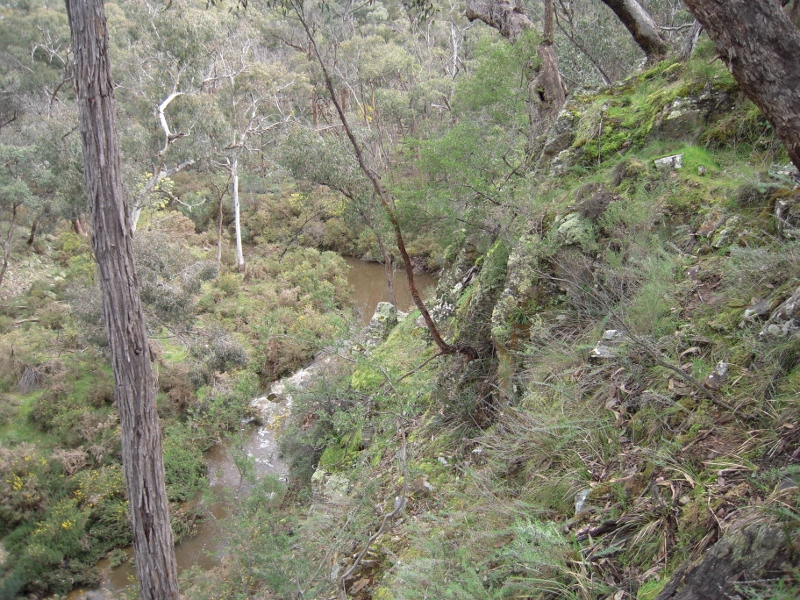The following is FOBIF’s draft submission on the Fire Operations Plan [see above]. Member feedback is invited:
GENERAL COMMENTS
1. We believe that as far as possible, burn areas be small: less than 100 ha. In zones 1 and 2, they should be smaller than 50 ha. In our opinion, this would make it easier for managers to pay close attention to ecological values, something hard or impossible with large hectare burns.
2. DSE should where possible integrate weed and fire management in the burn plans. We note that integration of weed management and bushfire control is part of the Mount Alexander municipal fire plan.

Middleton Creek, Castlemaine Diggings NHP: Common sense dictates that steep slopes should not be burned, and that important old trees not be destroyed.
3. In Zone 3 burns, unless it is possible to guarantee that burn cover will not exceed 20% [that is, unless it is possible to guarantee a genuine mosaic burn], and that vulnerable areas [eg, steep areas, or areas of particular interest, like large trees, creeksides etc] can be protected, we believe that managers should aim to burn precisely defined areas within the treatment zone. We would like to have access to the Zone 3 burn plans for our area.
4. Spring burns should be avoided.
SPECIFIC COMMENTS
1. CAS 15: Middleton Ck-Wewak Tk: this is a very large and diverse area. There are large habitat trees along Middleton Ck, Brown’s Gully and other gully areas; poor quality dense eucalypts along Amanda’s track; very steep topography, especially along Middleton Creek; heavy gorse infestations along Middleton Creek, etc. The fuel loads vary widely. We can’t see how this whole area can be considered as a single burn. We recommend that DSE consider confining the actual burn coverage to a section of the treatment zone. Please note that Guildford Landcare is conducting gorse clearance and revegetation work along Middleton Creek.
We also believe a. that this burn should be conducted with this year’s Tarilta burn in mind; and b. that DSE and Parks Victoria should have a look at the condition of bushland to the north of this zone, which has been devastated by lerp attack probably related to the radical decline of bushland bird numbers. Fire activity which would contribute to further such decline should be avoided.
2.CAS 10, 11, 12 [Muckleford]: We would like to know what lessons DSE has drawn from last year’s Muckleford burns, and how these lessons are going to be applied.
3. CAS 9 [Rusconi’s Rd, Tarilta]: Our comments for CAS 15 apply here.
4. CAS 3, 7 [Kalimna Park]: This is a special case for conducting very small burns at a time. CAS 7 should be broken up. Fire in CAS 3 should be precisely targeted at flammable weeds, of which there is a good supply.




 Click on image for info/order page
Click on image for info/order page Click on image for info/order page
Click on image for info/order page Click on image for info/order page
Click on image for info/order page




















